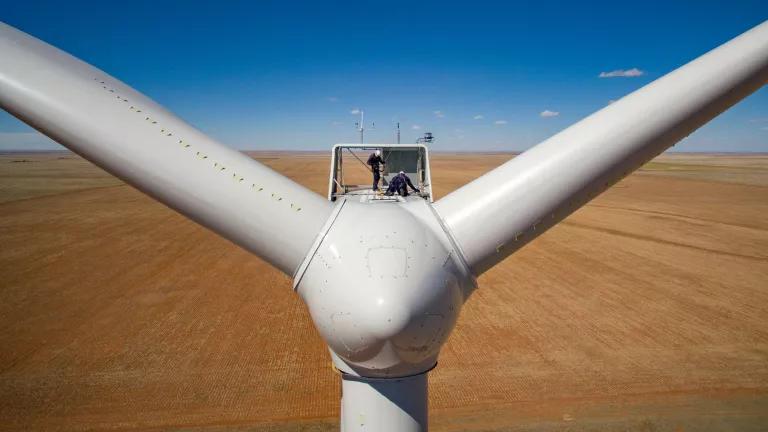
The California Air Resources Board released the results today of the latest auction of carbon allowances. In line with previous auctions, allowances available for use this year ('current vintage') sold out just above the price floor at $12.29, and allowances available for use starting in 2018 ('future vintage') nearly sold out at the $12.10 floor.
The auctions are part of California's economy-wide cap-and-trade program, linked with Quebec's, which requires the state's largest emitters to acquire a shrinking pool of permits (known as allowances) for every ton of pollution they emit. This puts a price on pollution to help level the playing field for clean energy. It also puts a hard limit on pollution to ensure California achieves its targets of reducing carbon emissions 40 percent below 1990 levels by 2030 and 80 percent below 1990 levels by 2050.
Proceeds from the auctions must be invested in programs to reduce pollution. Governor Brown's revised budget would invest $2.2 billion next fiscal year to scale up the state's current suite of clean energy and low carbon programs and fund new drought response measures and renewable energy and energy efficiency projects at UC and CSU campuses. The Senate and Assembly plans largely mirror the Governor's, but allocate additional revenue and make modifications to certain programs. The final plan must be agreed upon by the June 15 budget deadline.
The Faces of California's Clean Energy Story
As we report on the auction results and budget negotiations, it's easy to lose sight of the bigger picture. Or rather - smaller picture. Because ultimately the success of California's climate policies will not be measured in tons. We know California cannot arrest climate change single-handedly. Like so often before, however, California can show the way forward by building a model for others to follow. And that means ensuring all Californians are part of the story.
Californians like Jose Mendoza, whom I had a chance to meet yesterday in Sacramento. Jose lives in Stockton but has to travel to San Francisco several times a month for treatment at UCSF for pulmonary hypertension. He and his wife Lorena have six girls, all honor students, who travel to play competitive soccer across the state. Jose drives them to school and to all their games, and until yesterday they made their trips in a 1984 Ford Ranger that repeatedly broke down and failed emissions tests. The Mendozas weren't able to afford to fix the truck, so it kept operating, exacerbating Stockton's already unhealthy air. It's a common problem: statewide, an estimated 80 percent of vehicle pollution comes from only 25 percent of vehicles.
But that could change under a new rebate program for low-income Californians funded by auction sales. Thanks to the program, the Mendoza family was able to scrap (albeit not obliterate, lacking a bazooka) their Ford and drive away in a 2013 plug-in hybrid Prius. The $125 per month they had spent on repairs will now finance a clean and fuel-efficient car that will save them over $160 every month on fuel costs.
The Mendoza family is not alone. Polluter-funded programs are now paying for solar panels for households most affected by high pollution and limited energy choices (like the Ramirez family in Madera), energy efficiency retrofits (like the Tidwell family in Compton), and many others. NRDC is working with the Greenlining Institute to tell their stories and document the many faces and lives changed for the better by our state's trailblazing climate policies at UpliftCA.org.
Local Benefits, Global Reach
These stories remind us of what real climate action can deliver. As world leaders prepare for climate negotiations in Paris this winter, California is looking to expand its reach. The state is spearheading a new initiative - the "Under 2 MOU" - that commits signatories to limiting their emissions to either 80% below 1990 levels or two tons per capita by 2050 (the levels required to limit warming to two degrees Celsius). The twelve founding signatories span seven countries in both advanced and developing economies and would collectively constitute the fourth largest economic entity in the world, representing more than $4.5 trillion in GDP and 100 million people.
California's quarterly cap-and-trade auctions are becoming increasingly routine around these parts. But the emerging benefits and stories behind them - reduced carbon emissions and air pollution, innovations in clean technology, growing jobs, and increasing energy choices - can show the way forward for people everywhere.



